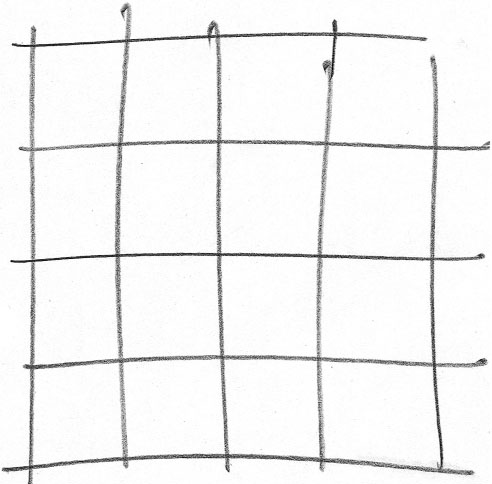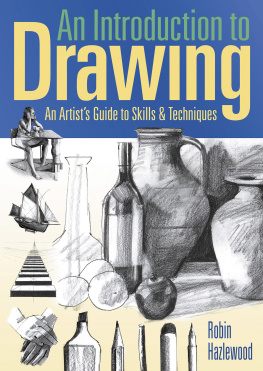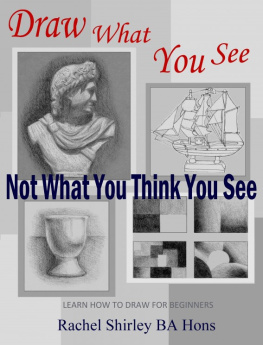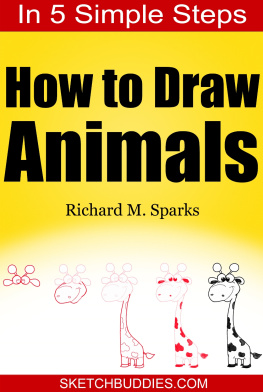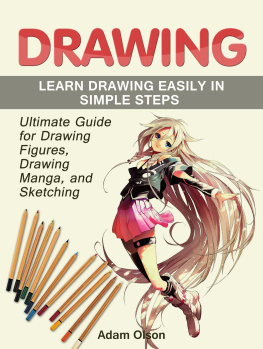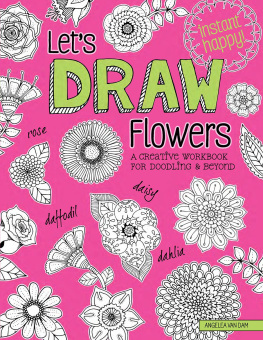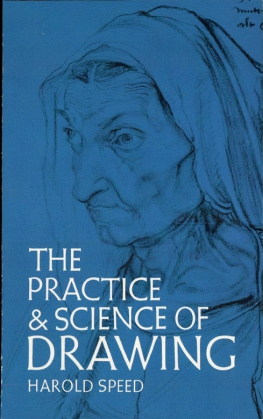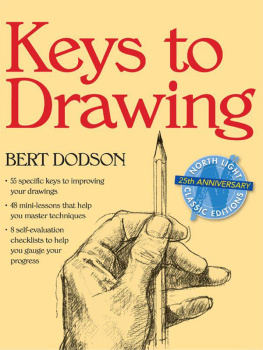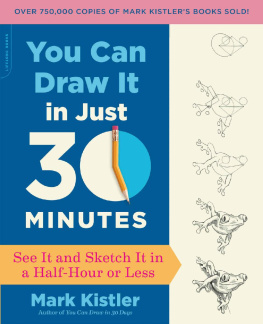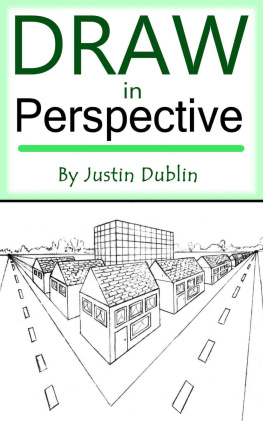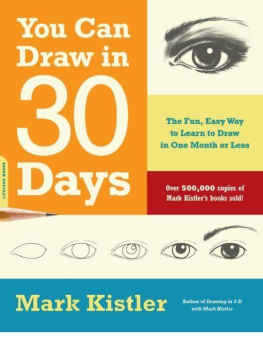
Preface
The aim of this book is to show you that learning to draw the visual world is not about some mysterious talent or innate facility but rather about looking at objects in a different way from that in which you normally do. It is also about application, motivation and practice. If your desire to draw is strong enough, you will be able to.
When I first started to look in the way in which I am asking you to do, I thought it was cheating because it seemed too much like copying. I had been told that drawing was about using my imagination rather than seeing in a different way. It was only when I started to look at the work of great painters that I realized that seeing was what really mattered, and unless you saw what was there in reality you had nothing on which to feed your imagination. In the end, imagination is more about how you remember what you have seen than conjuring up something out of nothing.
Beginning to see in a manner that can be translated to paper can give you a new way of looking at the world seeing its shapes and forms perhaps for the first time. This can not only feed your imagination but also give you a view of the world that is unique to you.
Although not all the exercises in this book are easy, they are within everyones grasp if they are prepared to put in the time. Like most things, drawing becomes easier the more you do it. I have not attempted to show you all the ways of drawing that exist such as imaginative, illustrative, technical, and so on as I believe that what is important in the beginning is to have confidence and belief in yourself. One of the best ways of gaining this confidence is by being able to represent the visual world in two dimensions by drawing it.
Drawing is a wonderful experience; seeing objects gradually appear on the paper can be magical. Once this magic has started to work you will want to take things further. Then it not only becomes a process of getting better but also a road towards getting to know more about yourself.

Even a complicated still life will become surprisingly straightforward once you have learnt how to look at it.
SECTION 1
Introduction
We all draw. From very early on we make marks, whether with instruments such as pencils and pens or just our fingers. Most people think that learning to draw is difficult and requires a certain type of inherent talent, but in fact it is much more about learning to see in a different way than it is about any particular facility of the hand.
Writing was at one time thought to be a skill that only a few people could possess. Today most people write without any thought of it being difficult.

In this study of a pear tree in a French garden, notice how the marks made by the pencil are used to indicate the quality of movement of the branches.
Unlike playing an instrument such as the piano or violin, drawing does not require us to train our hands in a new way. Learning to write has already done that for us, therefore anyone who can write their name should be able to draw.
So why, I hear you say, can we not all draw? The answer is that we have learned to use our eyes in a way that helps us move about the world to get our food, to fight or flee not to see the world from one static point of view. This has meant that we create concepts of what the world is like three-dimensionally, rather than seeing it in a static two-dimensional way.
For instance, when we walk into a room we do not see the enormous variety of visual shapes, patterns and colours made by tables, chairs and so on that constantly change as we walk about. We use the visual information that comes to us to create, from these fleeting shapes and colours, a three-dimensional room containing solid tables and chairs with spaces between.
When you look at an object such as a table, a chair or a jug from one point of view, there is always visual confusion between what you see and what you know the object to be like as a three-dimensional whole. It is this confusion you need to overcome in order to be able to draw. This will involve you concentrating more upon what you can actually see than on what your brain tells you about a familiar object.

Getting started
You will first need something to draw with and a surface to draw upon.
There are many different types of pencil, ranging from very hard ones such as 6H to very soft ones such as 8B. We will go into this in more detail later, but for now, a B is a good basic grade for drawing.
Use a piece of cartridge paper, either in a sketch book or attached to a board. A good size of paper to begin with is A3. Equip yourself also with a pencil sharpener and an eraser, and you will be ready to start.
Basic elements
The basic elements of all line drawings are straight and curved lines. It is how you judge whether a line or curve is in the right relationship with another that is the essence of making a good drawing.
The following are a few drawing exercises that will develop your ability to successfully make these sometimes fine judgements of proportion and relationship.
HORIZONTALS AND VERTICALS
First, draw freehand three approximate squares. These can be any size you feel comfortable with. Then, using only your eyes as a guide, divide the first square horizontally in half (Step 1). Do the same in the next square and then divide each of the halves in half (Step 2). In the third square, divide each area again in half (Step 3).

STEP 1
Divide the square in half horizontally.
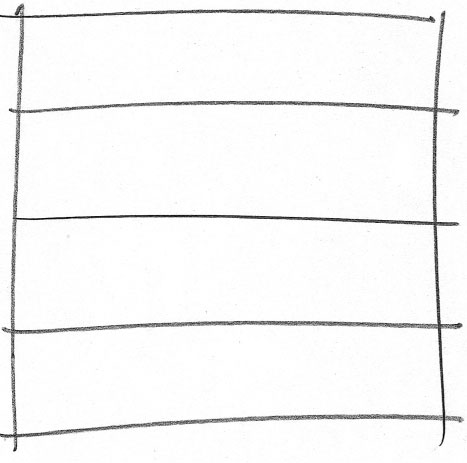
STEP 2
Divide the square in half horizontally then divide the two halves into quarters.
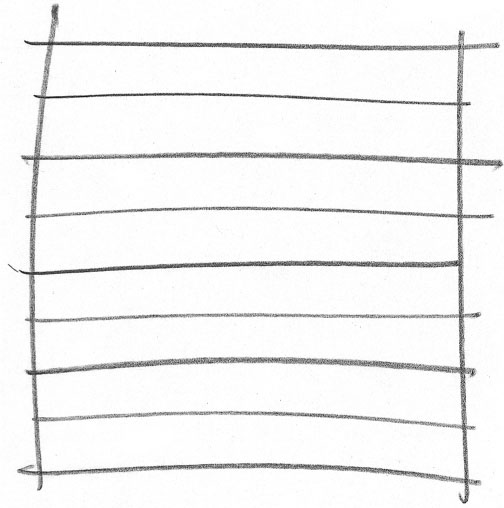
STEP 3
Divide the square in half horizontally, then divide the two halves into quarters and the quarters into eighths.
This process of halving is important, since it makes it easier to judge equal proportions rather than trying to divide the square in four or eight equal parts from the beginning.
When you have finished, check how well you have done. How parallel are the lines? How equal are the spaces apart? If you feel you can do better, have another try.
VERTICALS
Having done horizontal lines, draw another three freehand squares and try vertical ones (see Steps 4, 5, 6).

STEP 4
Repeat Step 1 on the previous page, then divide the square in half vertically.
